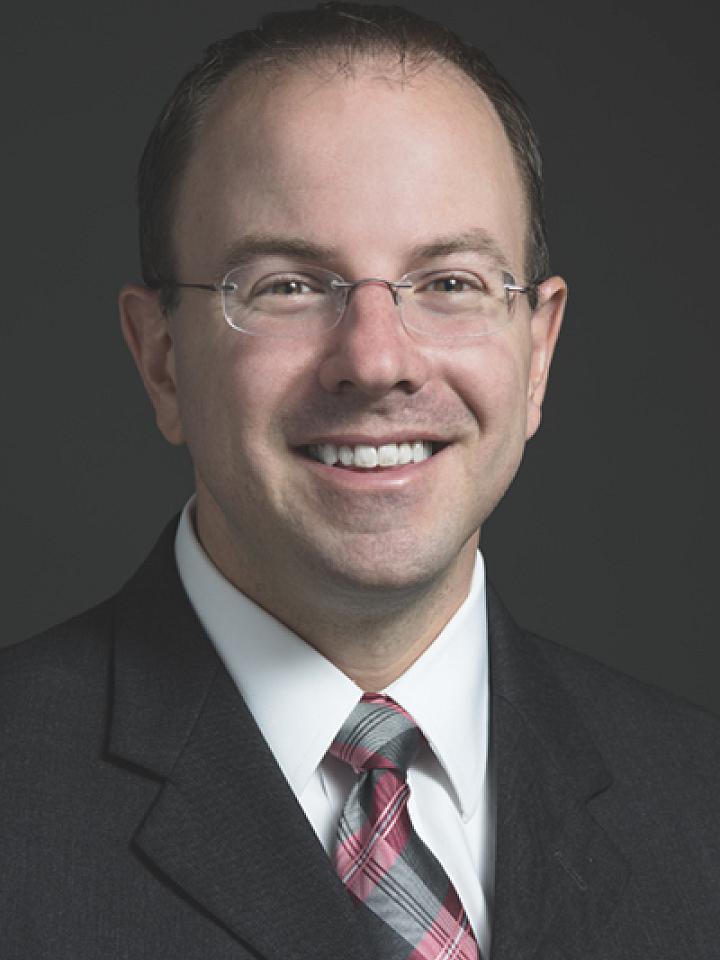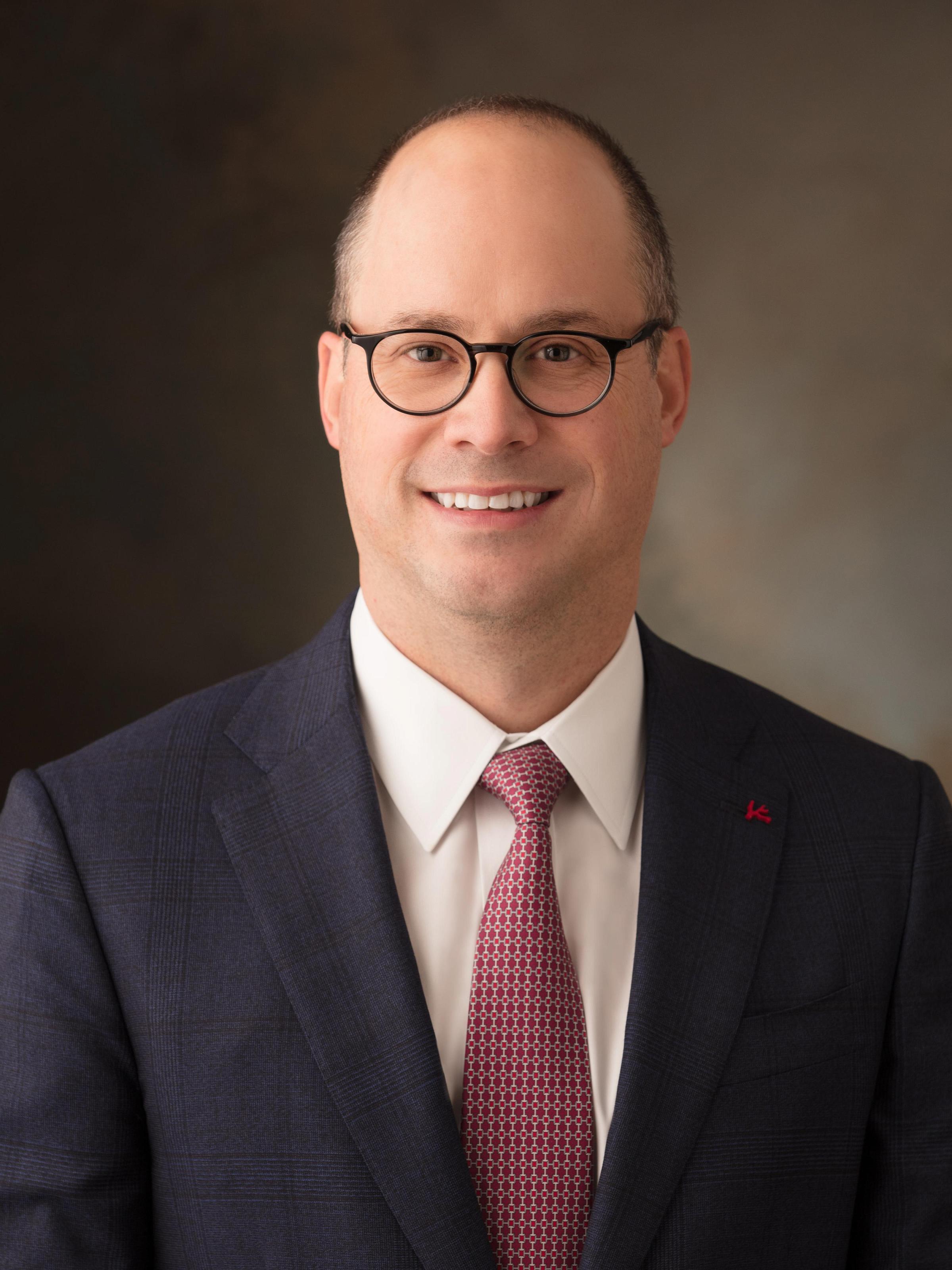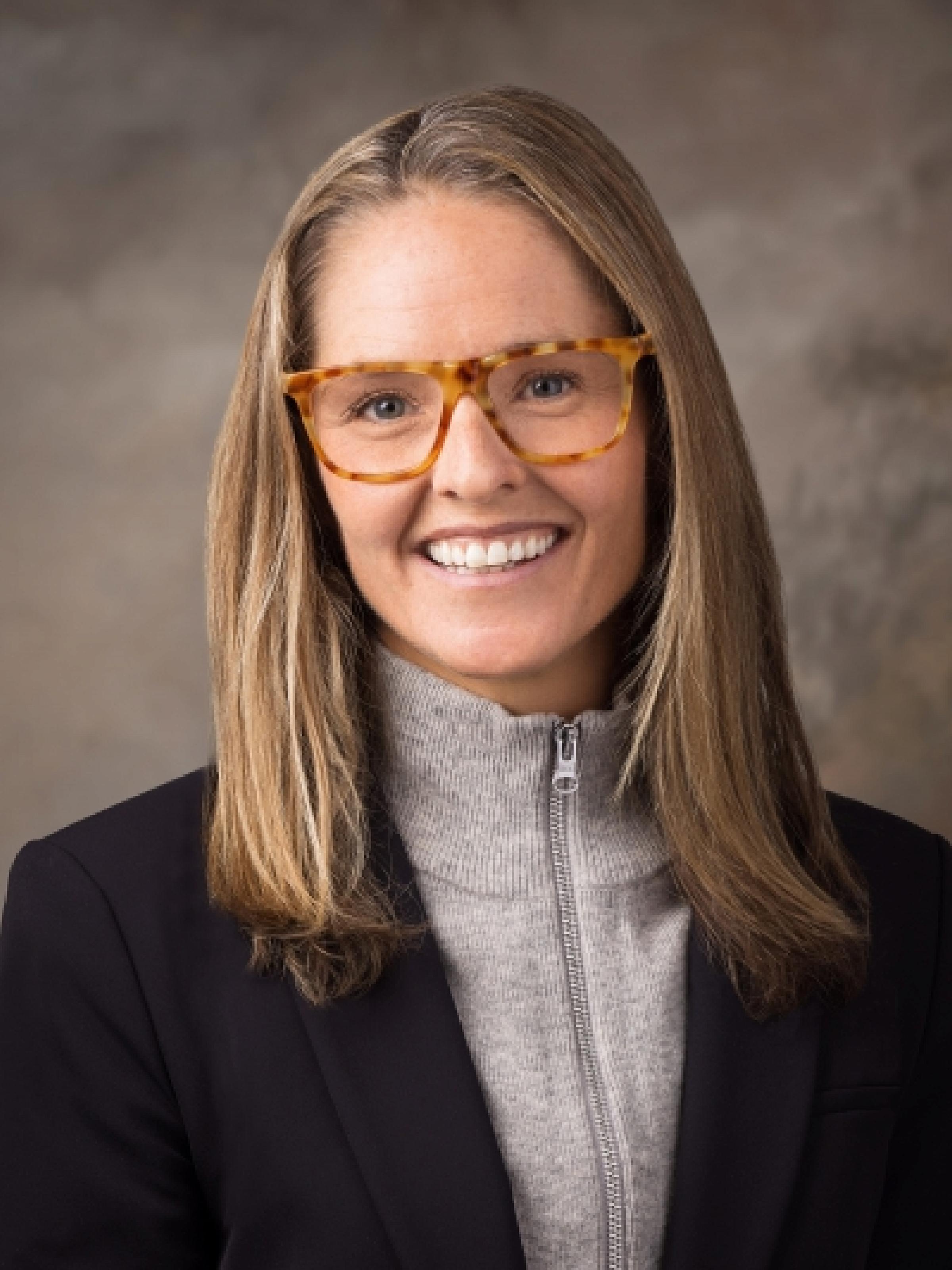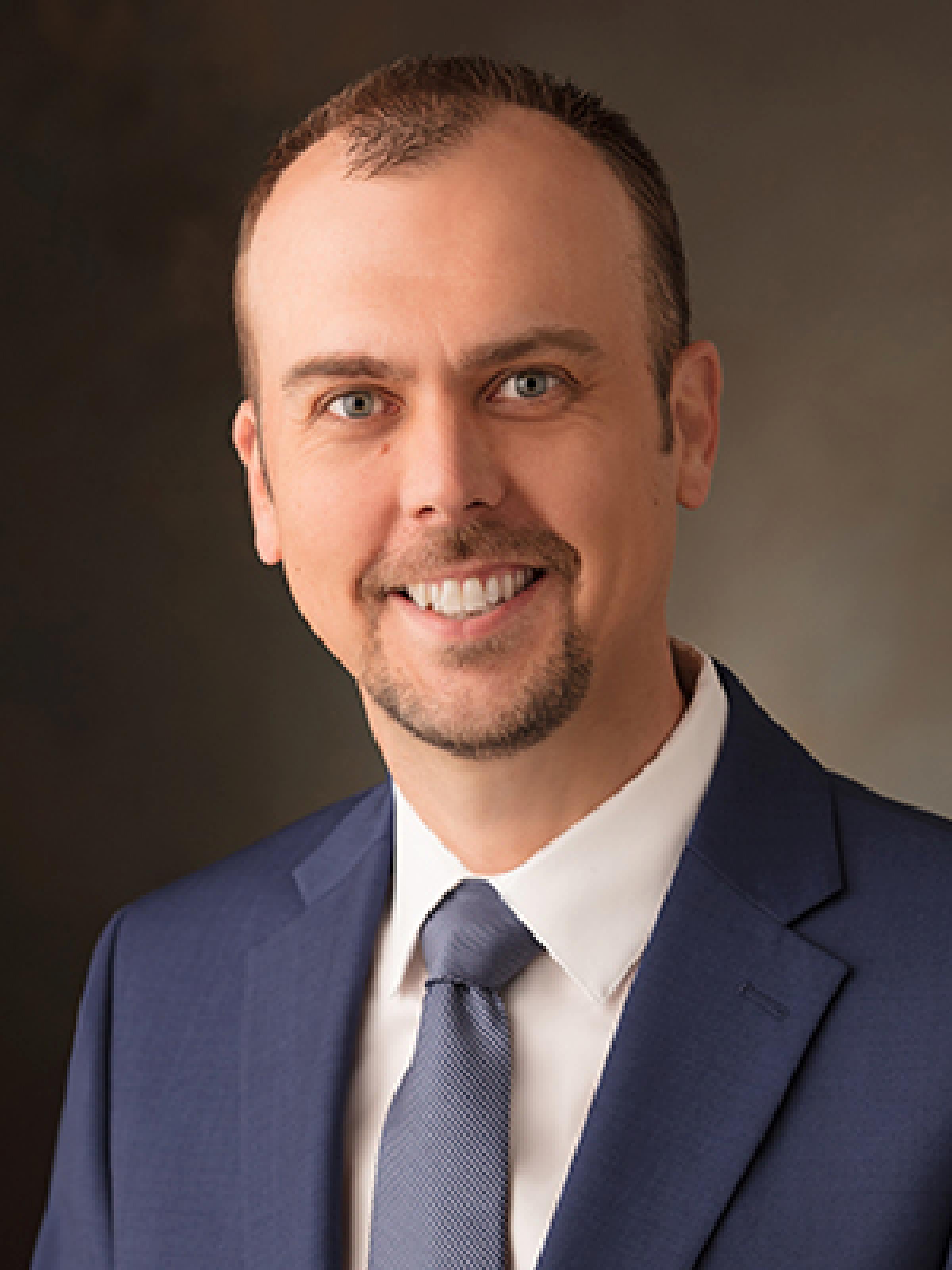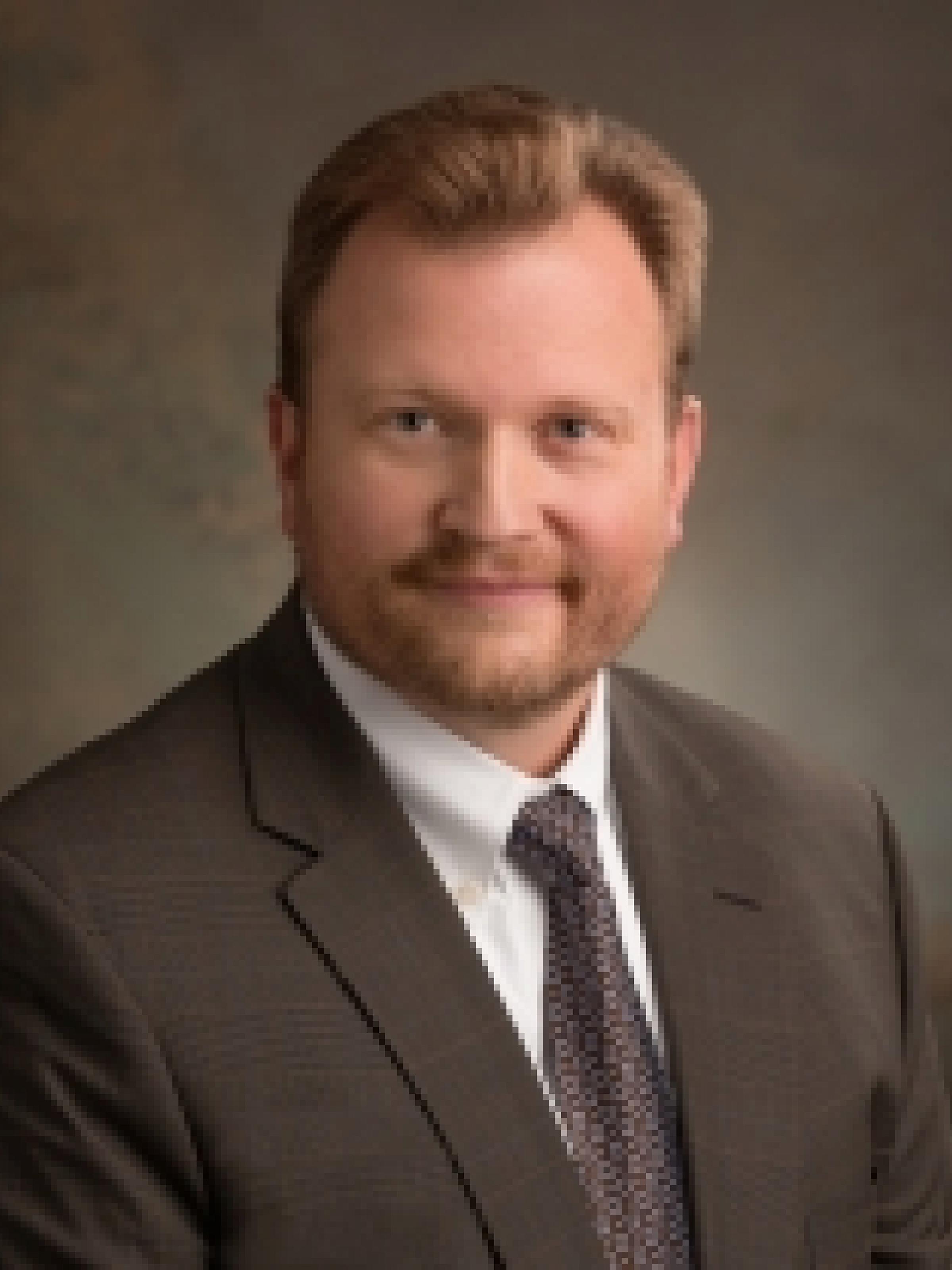
Pediatric Surgery Research

Pediatric Surgery Research
PEDIATRIC SURGERY RESEARCH
FACULTY PUBLICATIONS
Explore selected publications from our pediatric surgery researchers.
- Bucher BT, Duggan EM, Grubb PH, France DJ, Lally KP, Blakely ML (2016). Does the American College of Surgeons National Surgical Quality Improvement Program pediatric provide actionable quality improvement data for surgical neonates? J Pediatr surg, 51(9), 1440-4.
- Kwendakwema N, Al-Dulaimi R, Presson AP, Zobell S, Stevens AM, Bucher BT, Barnhart DC, Rollins MD (2016). Enterocolitis and bowel function in children with Hirschsprung disease and trisomy 21. J Pediatr Surg, 51(12), 2001-2004,
- Chapman AB, Mowery DL, Swords DS, Chapman WW, Bucher BT (2017). Detecting Evidence of Intra-abdominal Surgical Site Infections from Radiology Reports Using Natural Language Processing. AMIA Annu Symp Proc, 2017, 515-524.
- Short SS, Fenton SJ, Scaife ER, Bucher BT (2017). Helmet underutilization by children during equestrian events is associated with increased traumatic brain injury. LID – S0022-3468(17)30192-6 [pii]LID-10.1016/j.jpedsurg.2017.03.043 [doi]. (Epub ahead of print) J Pediatr Surg.
- Chapman B, Mowery DL, Swords DS, Chapman WW, Bucher BT (2017). Detecting Evidence of Intraabdominal Surical Site Infections from Radiology Reports Using natural Language Processing. Proc AMIA Annu Fall Symp.
- Nourian MM, Schwartz AL, Stevens A, Scaife ER, Bucher BT (2017). Clearance of tunneled central venous catheter associated blood stream infections in children. LID-S0022-3468(17)30835-7[pii]LID – 10.1016/j.jpedsurg. 2017.12.010 [doi]. (Epub ahead of print) J Pediatr Surg.’
- Short SS, Bucher BT, Barnhart DC, Van Der Watt N, Zobell S, Allen A, Rollins MD (2018). Single-stage repair of rectoperineal and rectovestibular fistulae can be safely delayed beyond the neonatal period. LID-S0022-3468(18)30102-7 [pii]LID – 10.1016/j.jpedsurg.2018.02.048 [doi]. (Epub ahead of print) J Pediatr Surg.
- Schwartz AL, Nourian MM, Bucher BT(2018). Retained foreign bodies and associated risk factors and outcomes in pediatric surgical patients. LID – S0022-3468(18)30377-4 [pii]LID - 10.1016/j.jpedsurg.2018.06.044 [doi]. (Epub ahead of print) J Pediatr Surg.
- Batz-Kurycki MA, Green C, Anderson KT, Alder AC, Bucher BT, Cina RA, Jamshidi R, Russell RT, Williams RF, Tsao K (2018). Enhanced neonatal surgical site infection prediction model utilizing statistically and clinically significant variables in combination with a machine learning algorithm. LID-S0002-9610(18)30093-X[pii]LID-10.1016/j.amjsurg.2018.07.041 [doi]. (Epub ahead of print) Am J Surg.
- Garlick JW, Olson KA, Downs-Kelly E, Bucher BT, Matsen CB (2018). Secretory breast carcinoma in an 8-year old girl: A case report and literature review. LID-10.111/tbj. 13126[doi]. (Epub ahead of print) Breast J.
- Meyers RL, Rowland JR, Krailo M, Chen Z, Datzenstien HM, Mologolowkin MH (2009). Predictive power of pretreatment prognosic factors in children with hepatoblastoma: a report from the Children’s Oncology Group. Pediatr Blodd Cancer, 53 (6), 1016-22.
- Meyers RL, Tiao GM, Dunn SP, Langham MR Jr (2012). Liver transplantation in the management of unrespectable hepatoblastoma in children. Front Biosci (Elite Ed), 4, 1293-302.
- Malogolowkin MH, Katzenstein HM, Krailo M, Meyers RL (2012). Treatment of hepatoblastoma: the North American cooperative group experience. Front Biosci (Elite Ed), 4, 1717-23.
- Meyers RL, Czauderna P, Otte JB (2012). Surgical treatment of hepatoblastoma. Pediatr Blood Cancer, 59(5), 800-8.
- Loftus PD, Elder Ct, Russell KW, Spanos SP, Barnhart DC, Scaife ER, Skarda DE, Rollin MD, Meyer RL (2016). Paravertebral regional blocks decrease length of stay following surgery for pectus excavatum in children. J Pediatr Surg, 51(1), 149-53.
- Czauderna P, Haeberle B, Hiyama E, Rangaswami A, Krailo M, Maibach R, Rinaldi E, Feng Y, Aronson D, Malogolowkin M, Yoshimura K, Leuschner I, Lopez-Terrada D, Hishiki T, Perilongo G, von Schweinitz D, Schmid I, Watanabe K, Derosa M, Meyer R (2016). The Children’s Hepatic tumors International Collaboration (CHIC): Novel global rare tumor database yields new prognostic factors in hepatoblastoma and becomes a research model. Eur J Cancer, 52, 92-101.
- Meyers RL, Maibach R, Hiyama E, Haberle B, Krailo M, Rangaswami A, Aronson DC, Malogolowkin MH, Perilongo G, von Schweinitz d, Ansari M, Lopez-Terrada D, Tanaka Y, Alaggio R, Leuschner I, Hishiki T, Schmid I, Watanabe K, Yoshimura K, Feng Y, Rinaldi E, Saraceno D, Derosa M, ZzaudernaP (2016). Risk-stratified staging in paediatric hepatoblastoma: a unified analysis from the Children’s Hepatic tumors International Collaboration. LID-S1470-2045(16)30598-8[pii]LID-10.1016/S1470-2045(16)30598-8 [doi]. (Epub ahead of print) Lancet Oncol.
- Dasgupta R, Billmire D, Aldrink JH, Meyers RL (February 2017). What’s New in Pediatric Surgical Oncology? Curr Opin Pediatr, 29(1), 3-11.
- Katzenstein HM, Furman WL, Malgolowkin MH, Krailo MD, McCarville MB, Towbin AJ, Tiao GM, Finegold MJ, Ranganathan S, Dunn SP, Langham MR, McGahren ED, Rodriquez-Galindo C, Meyers RL (2017). Upfront window vincristine/irinotecan treatment of high-risk hepatoblastoma: A report from the Children’s Oncology Group AHEP0731 study committee. Cancer, 123(12), 2360-2367.
- O’Neill AF, Towbin AJ, Krailo MD, Xia C, Gao Y, McCarville MB, Meyers RL, McGahren ED, Tiao GM, Dunn SP, Langham MR Jr, Weldon CB, Finegold MJ, Ranganathan S, Furman WL, Malogolowkin M, Rodriguez-Galindo C, Katzenstein HM (2017). Characterization of Pulmonary Metastases in Children With Hepatoblastoma Treated on Children’s Oncology Group Protocol AHEP0731 (The Treatment of Children With All Stages of Hepatoblastoma): A Report From the Children’s Oncology Group. J Clin Oncol, JCO2017735654.
- Fenton SJ, Hansen KW, Meyers RL, Vargo DJ, White KS, Firth SD, Scaife ER (2004). CT scan and the pediatric trauma patient—are we overdoing it? J Pediatr Surg, 39(12), 1877-81.
- Fenton SJ, Scaife ER, Meyers RL, Hansen KW, Firth SD (2005). The prevalence of driveway back-over injuries in the era of sports utility vehicles. J Pediatr Surg, 40(12), 1964-8.
- Fenton SJ, Peterson DN, Connors RC, Hansen KW, Metzger RR, Scaife ER (2009). A standard pediatric trauma laboratory panel: a plea for a minimalist approach. J Trauma, 66(3), 703-6.
- Parikh A, Alley JB, Peterson RM, Harnisch MC, Pfluke JM, Tapper DM, Fenton SJ (2012). Management options for symptomatic stenosis after laparoscopic vertical sleeve gastrectomy in the morbidly obese. Surg Endosc, 26(3), 738-46.
- Tyner RP, Clifton GT, Fenton SJ (2013). Hand-sewn gastrojejunostomy using knotless unidirectional barbed absorbable suture during laparoscopic gastric bypass. Surg Endosc, 27(4), 1360-6.
- Fenton SJ, Lee JH, Stevens AM, Kimbal KC, Zhang C, Presson AP, Metzger RR, Scaife ER (2016). Preventable transfers in pediatric trauma: A 10-year experience at a level I pediatric trauma center. J Pediatr Surg, 51(4), 645-8.
- Fenton SJ, Sandoval KN, Stevens AM, Scaife ER (2016). The use of angiography in pediatric blunt abdominal trauma patients. J Trauma Acute Care Surg, 81(2), 261-5.
- Fenton SJ, Campbell SJ, Stevens AM, Zhang C, Presson AP, Lee JH (2016). Preventable pediatric intensive care unit admissions over a 13-year period at a level 1 pediatric trauma center. J Pediatr Surg, 51(10), 1688-92.
- Hunt MM, Stevens AM, Hansen KW, Fenton SJ (2017). The utility of a "trauma 1 OP" activation at a level 1 pediatric trauma center. J Pediatr Surg, 52(2), 322-326.
- Hewes HA, Christensen M, Taillac PP, Mann NC, Jacobsen KK, Fenton SJ (2017). Consequences of pediatric undertriage and overtriage in a statewide trauma system. J Trauma Acute Care Surg, 83(4), 662-667.
- Stokes SM, Scaife ER, Stevens AM, Fenton SJ (2018). Longitudinal analysis of hospital charges following injury in a level 1 pediatric trauma system.LID - S0022-3468(18)30117-9 [pii]LID - 10.1016/j.jpedsurg.2018.02.054 [doi]. (Epub ahead of print) J Pediatr Surg.
- Russell KW, Barnhart DC, Zobell S, Scaife ER, Rollins MD (2015). Effectiveness of an organized bowel management program in the management of severe chronic constipation in children. J Pediatr Surg, 50(3), 444-7.
- Russell KW, Rollins MD, Barnhart DC, Mone MC, Meyers RL, Skarda DE, Soukup ES, Black RE, Molitor MS, Stoddard GJ, Scaife ER (2015). Charge Awareness Affects Treatment Choice: Prospective Randomized Trial in Pediatric Appendectomy. Ann Surg, 262(1), 189-93.
- Skarda DE, Yoder BA, Anstadt EE, Lally PA, Greene T, McFadden M, Rollins MD (2015). Epoprostenol Does Not Affect Mortality in Neonates with Congenital Diaphragmatic Hernia. Eur J Pediatr Surg, 25(5), 454-9.
- Loftus PD, Elder CT, Russell KW, Spanos SP, Barnhart DC, Scaife ER, Skarda DE, Rollins MD, Meyers RL (2016). Paravertebral regional blocks decrease length of stay following surgery for pectus excavatum in children. J Pediatr Surg, 51(1), 149-53.
- Liechty ST, Barnhart DC, Huber JT, Zobell S, Rollins MD (2016). The morbidity of a divided stoma compared to a loop colostomy in patients with anorectal malformation. J Pediatr Surg, 51(1), 107-10.
- Liechty ST, Barnhart DC, Huber JT, Zobell S, Rollins MD (2016). The morbidity of a divided stoma compared to a loop colostomy in patients with anorectal malformation. J Pediatr Surg, 51(1), 107-110.
- Kwendakwema N, Al-Dulaimi R, Presson AP, Zobell S, Stevens AM, Bucher BT, Barnhart DC, Rollins MD (2016). Enterocolitis and bowel function in children with Hirschsprung disease and trisomy 21. J Pediatr Surg, 51(12), 2001-2004.
- Langer JC, Rollins MD, Levitt M, Gosain A, Torre L, Kapur RP, Cowles RA, Horton J, Rothstein DH, Goldstein AM (2017). Guidelines for the management of postoperative obstructive symptoms in children with Hirschsprung disease. Pediatr Surg Int, 33(5), 523-526.
- Cairo SB, Chiu PPL, Dasgupta R, Diefenbach KA, Goldstein AM, Hamilton NA, Lo A, Rollins MD, Rothstein DH (2017). Transitions in care from pediatric to adult general surgery: Evaluating an unmet need for patients wtih anorectal malformation and Hirschsprung disease. J Pediatr Surg, 2017(Oct 7).
- Cairo SB, Gasior A, Rollins MD, Rothstein DH (2018). Challenges in Transition of Care for Patients With Anorectal Malformations: A Systematic Review and Recommendations for Comprehensive Care. Dis Colon Rectum, 2018(Mar 61 (3)), 390-399.
- Short SS, Bucher BT, Barnhart DC, VanDerWatt N, Zobell S, Allen A, Rollins MD (2018). Single-Stage Repair of Rectoperineal and Rectovestibular Fistulae can be Safely Delayed Beyond the Neonatal Period. J Pediatr Surg.
- Reck-Burneo CA, Vilanova-Sanchez A, Gasior AC, Dingemans AJM, Lane VA, Dyckes R, Nash O, Weaver L, Maloof T, Wood RJ, Zobell S, Rollins MD, Levitt MA (2018). A structured bowel management program for patients with severe functional constipation can help decrease emergency department visits, hospital admissions, and healthcare costs. J Pediatr Surg, (March).
- Reeder RW, Wood RJ, Avansino JR, Levitt MA, Durham M, Sutcliffe J, Midrio P, Calkins CM, de Blaauw I, Dickie BH, Rollins MD (2018). The Pediatric Colorectal and Pelvic Learning Consortium (PCPLC): rationale, infrastructure and initial steps. Techniques in Coloproctology.
- Russell KW, Barnhart DC, Madden J, Leeflang E, Jackson WD, Feola GP, Meyers RL, Scaife ER, Rollins MD (2013). Non-operative treatment versus percutaneous drainage of pancreatic pseudocysts in children.
- Russell KW, Soukup ES, Matzger RR, Zobell S, Scaife ER, Barnhart DC, Rollins MD (2014). Fecal continence following complex anorectal trauma in children. J Pediatr Surg, 49(2), 349-52.
- Russell KW, Scaife CL, Weber Dc, Windsor JS, Wheeler AR, Smith W, Wedmore I, McIntosh SE, Lieberman JR (2014). Wilderness Medical Society practice guidelines for the treatment of acute pain in remote environments. Wilderness Environ Med, 25(1), 41-9.
- Russell KW, Barnhart Dc, Rollins MD, Hedlund G, Scaife ER (2014). Musculoskeletal deformities following repair of large congenital diaphragmatic Hernias. J Pediatr Surg, 49(6) 886-9.
- Russell KW, Rollins MD, Feola Gp, Arnold R, Barnhart DC, Scaife ER (2014). Sclerotherapy for intra-abdominal lymphatic malformation in children.
- Russell KW, Barnhart DC, Zobell S. Scaife ER, Rollins MD (2015). Effectiveness of an organized bowel management program in the management of severe chronic constipation in children. J Pediatr Surg, 50(3), 444-7.
- Russell KW, Rollins MD, Barnhart DC, Mone MC, Meyers RL, Skarda DE, Soukup ES, Black RE, Molitor MS, Stoddard GJ, Scaife ER (2015). Charge Awareness Affects Treatment Choice: Prospective Randomized Trial in Pediatric Apendectomy. Ann Surg, 262(1), 189-93.
- Russell KW, O’Halleran BP, Bowen ME, Mone MC, Scaife CL (2015). The Barcelona Technique for Ileostomy Reversal. J Gastrointest Surg, 19(12), 2269-72.
- Russell KW, Saffle JR, Theurer L, Cochran AL (2015). Transition from grant funding to a self-supporting burn telemedicine program in the western United States. Am J Surg, 210(6), 1037-42; discussion 1041-4.
- Russell KW, Robinson RE, Mone MC, Scaife CL (2016). Enterovaginal or Vesicovaginal Fistula Control Using a Silicone Cup. Obstet Gynecol, 128(6), 1365-1368.
Peer Reviewed Journal Articles
- Scaife ER, Johnson DG, Meyers RL, Johnson SM, Matlak (2003). The split abdominal wall muscle flap—a simple, mesh-free approach to repair large diaphragmatic hernia. J Pediatr Surg, 38(12), 1278-51.
- Fenton SJ, Hansen KW, Meyers RL, Vargo DJ, White KS, Firth SD, Scaife ER (2004). CT scan and the pediatric trauma patient—are we overdoing it? J Pediatr Surg, 39(12), 1877-81.
- Fenton SJ, Scaife ER, Meyers RL, Hansen KW, Firth SD (2005). The prevalence of driveway back-over injuries in the era of sports utility vehicles. J Pediatr Surg, 40(12), 1964-8.
- Brant-Zawadzki PB, Fenton SJ, Nichol PF, Matlak ME, Scaife ER (2007). The split abdominal wall muscle flap repair for large congenital diaphragmatic hernias on extracorporeal membrane oxygenation. J Pediatr Surg, 42(6), 1047-50; discussion 1051.
- Scaife ER, Connors RC, Morris SE, Nichol PF, Black RE, Matlak ME, Hansen K, Bolte RG (2007). An established extracorporeal membrane oxygenation protocol promotes survival in extreme hyothermia. J Pediatr Surg, 42(12), 2012-6.
- Scaife ER, Fenton SJ, Hansen KW, Metzger RR (2009). Use of focused abdominal sonography for trauma at pediatric and adult trauma center: a survey. J Pediatr Surg, 44(9), 1746-9.
- Russell KW, Barnhart DC, Rollins MD, Hedlund G, Scaife ER (2014). Musculoskeletal deformities following repair of large congenital diaphragmatic hernias. J Pediatr Surg, 49(6), 886-9.
- Russell KW, Rollins MD, Barnhart DC, Mone MC, Meyers RL, Skarda DE, Soukup ES, Black RE, Molitor MS, Stoddard GJ, Scaife ER (2015). Charge Awareness Affects Treatment Choice: Prospective Randomized Trial in Pediatric Appendectomy. Ann Surg, 262(1), 189-93.
- Skarda D, Barnhart D, Scaife E, Molitor M, Meyers R, Rollins M (2012). Extracorporeal cardiopulmonary resuscitation (EC-CPR) for hypothermic arrest in children: is meaningful survival a reasonable expectation? J Pediatr Surg, 47(12), 2239-43.
- Scaife ER, Rollins MD, Barnhart DC, Downey EC, Black RE, Meyers RL, Stevens MH, Gorgdon S, Prince JS, Battaglia D, Fenton SJ, Plumb J, Metzger RR (2013). The role of focused abdominal sonography for trauma (FAST) in pediatric trauma evaluation. J Pediatr Surg, 48(6), 1377-83.
Review Articles
- Meyers RL, Scaife ER (2000). Benign liver and biliary tract masses in infants and toddlers. [Review]. Semin Pediatri Surg, 9(3), 146-55.
Book Chapters
- Scaife E, Johnson D (2003). "Esophageal Replacement". In Peter Mattei (Ed.), Surgical Directives: Pediatric Surgery (pp. 213-237). Lippincott Williams and Wilkins.
- Short SS, Frykman PK, Nguyen N, Liu Q, Berel D, Wang KS (2013). Laparoscopic Common Bile duct exploration in children is associated with decreased cost and length of stay: results of a two-center analysis. J Pediatr Surg, 48(1), 215-20.
- Short SS, Kimble KJ, Zhai S, Frykman GK, Frykman PK, (2013). A low-cost peripheral nerve stimulator for anorectal malformation (ARM) surgery. Eur J Pediatr Surg, 23(1), 25-8.
- Short SS, Dubinsky MC, Rabizadeh S, Farrior S, Berel D, Frykman PK (2013). Distinct phenotypes of children with perianal perforation Crohn’s disease. J Pediatr Surg, 48(6), 1301-5.
- Jensen AR, Short SS, Anselmo DM, Torres MB, Frykman PK, Shin Ce, Wang K, Nguyen NX (2013). Laparoscopic versus open treatment of congenital duodenal obstruction: multicenter short-term outcomes analysis. J Laparoendosc Adv Surg Tech A, 23(10), 876-80.
- Short SS, Wang J, Castle SL, Fernandez GE, Smiley N, Zobel M, Pontarelli EM, Papillon SC, Grishin AV, Ford HR (2013). Low doses of celecoxib attenuate gut barrier failure during experimental peritonitis. Lab Invest, 93(12), 1265-75.
- Short SS, Naik-Mathuria BJ, Hunter CJ, Papillon S, Stein JE (2014). Use of the harmonic blade scalpel as a novel technique for thoracoscopic resection of pediatric paraspinal masses in children. Laparoendosc Adv Tech A, 24(4), 274-9.
- Short SS, Papillon S, Berel D, Ford HR, Frykman PK, Kawaguci A (2014). Late onset of necrotizing Enterocolitis in the full-term infant is associated with increased mortality: results from a two-center analysis. J Pediatr Surg, 49(6), 950-3.
- Short SS, Bucher BT, Barnhart Dc, Van Der Watt N, Zobell S, Allen A, Rollins MD (2018). Single-stage repair of rectoperineal and rectovestibular fistulae can be safely delayed beyond the neonatal period. LID – S0022-3468(18)30102-7 [pii]LID - 10.1016/j.jpedsurg.2018.02.048[doi]. (Epub ahead of print) J Pediatr Surg.
- Short SS, Pruitt LCC, Rollins MD (2018). Colonic diverticulosis in an infant: A clue to total colonic Hirschsprung disease. LID – S0022-3468(18)30206-9 [pii] LID – 10.1016/j.jpedsurg.2018.03.017 [doi]. (Epub ahead of print) J Pediatr Surg.
- Burkardt DD, Graham JM Jr, Short SS, Frykman PK (2014). Advances in Hirschsprung disease genetics and treatment strategies: an update for the primary care pediatrician. [Review]. Clin Pediatr (Phila), 53(1), 71-81.
- George ME, Skarda DE, Watts Cr, Pham HD, Beilman GJ (2008). Aggressive red blood cell transfusion: no association with improved outcomes for victims of isolated traumatic brain injury. Neurocrit Care, 8(3), 337-43.
- Skarda DE, Muller KE, George ME, Bellman GJ (2008). Eight hours of hypotensive versus normotensive resuscitation in a porcine model of controlled hemorrhagic shock. Acad Emerg Med. 15(9), 845-52.
- George ME, Rueth NM, Skarda DE, chipman JG, Quickel RR, Beilman GJ (2009). Hyperbaric oxygen does not improve outcome in patients with necrotizing soft tissue infection. Surg Infect (Larchmt), 10(1), 21-8.
- Skarda D, Henricksen JW, Rollins M (2012). Extracorporeal membrane oxygenation promotes survival in children with trauma related respiratory failure. Pediatr Surg Int. 28(7), 711-4.
- Skarda D, Barnhart D, Scaife E, Molitor M, Meyers R, Rollins M (2012). Extracorporeal cardiopulmonary resuscitation (EC-CPR) for hypothermic arrest in children: is meaningful survival a reasonable expectation? J Pediatr Surg, 47(12), 2239-43.
- Skarda DE, Schall K, Rollins M, Andrews S, Olson J, Greene T, McFadden M, Thorell EA, Barnhart D, Meyers R, Scaife E (2014). Response-based therapy for ruptured appendicitis reduces resource utilization. J Pediatr Surg, 49(12), 1726-9.
- Skarda DE, Schall K, Rollins M, Andrews S, Olson J, Greene T, McFadden M, Thorell EA, Barnhart D, Meyers R, Scaife E (2015). A dynamic postoperative protocol provides efficient care for pediatric patients with non-ruptured appendicitis. J Pediatr Surg, 50(1) 149-51.
- Skarda DE, Rollins M, Andrews S, McFadden M, Barnhart D, Meyers R, Scaife E (2015). One hospital, one appendectomy. The Cost effectiveness of a standardized doctor’s preference card. J Pediatr Surg, 50(6), 919-922.
- Skarda DE, Yoder BA, Anstadt EE, Lally PA, Green T, McFadden M, Rollins MD (2015). Epoprostenol Does Not Affect Mortality in Neonates with Congenital Diaphragmatic Hernia. Eur J Pediatr Surg, 25(5), 454-9.
- Loftus PD, Elder Ct, Russell KW, Spanos SP, Barnhart DC, Scaife ER, Skarda DE, Rollins MD, Meyers RL (2016). Paravertebral regional blocks decrease length of stay following surgery for pectus excavatum in children. J Pediatr Surg, 51(1), 149-53.
EMERITUS PUBLICATIONS
- Black RE, Mayer T, Walker ML, Christison EL, Johnson DG, Matlak ME, Storrs B, Clark,P. (1982) Special Report: Air transport of pediatric emergency cases. N Engl J Med, 307(23), 1465-1468
- Black RE, Choi KJ, Syme WC, Johnson DG, Matlak ME. (1984) Bronchoscopic removal of aspirated foreign bodies in children. Am J Surg, 148(6), 778-781.
- Hendrickson M, Matlak ME, Jaffe RB, Johnson DJ, Black RE. (1990) Treatment of traumatic pancreatic pseudocysts in children: the role of percutaneous drainage. Pediatr Surg Int, 5:347-349.
- Black RE, Johnson DG, Matlak ME. (1994) Bronchoscopic removal of aspirated foreign bodies in children. J Pediatr Surg, 29(5), 682-684.
- Fenton SJ, Torgenson M, Holsti M, Black RE. (2007) Magnetic attraction leading to a small bowel obstruction in a child. Pediatr Surg Int, Aug 12.
- Downey EC, Catanzarro A, Ninneman JL, Peters RM, Shackford SR. (1980) Long-term depressed immunocompetence of patients splenectomized for trauma. Surg Forum, 31, 41-44.
- Downey EC, Maher DP, Thompson WR. (1995) Diagnostic pneumoperitoneum accurately predicts the presence of patent proccessus vaginalis. J Pediatr Surg, 30(9), 1271-72.
- Rothenberg SS, Georgeson K, Decou JM, Downey EC, Lelli JL, Raschbaum G, Moores D. (2000) A clinical evaluation of the use of radially expandable laparoscopic access devices in the pediatric population. Pediatric Endosurgery & Innovative Techniques, 4(1), 7-11.
- Cochran A, Scaife ES, Hansen KS, Downey EC. (2003) Hyperglycemia and outcomes from pediatric traumatic brain injury. J Trauma, 55(6), 1035-1038.
- Srivastava R, Downey EC, Feola P, Samore M, Coburn L, Holobkov R, Mundorff M, Nkoy F, Desroucher D, James BC, Rosenbaum P, Young PC, Dean JM, O'Gorman MO. (2007) Quality of life of children with neurological impairment who receive a fundoplication for gastroesophageal reflux disease. J Hosp Med, 2(3), 165-73.
- Johnson DG. (1980) Treatment of Wilms' tumor in children. World J Surg, 4(1), 5-13.
- Johnson DG. (1986) Presidential Address: Excellence in search of recognition. J Pediatr Surg, 21(12), 1019-1031.
- Johnson DG, Condon VR. (1998) Monograph: Foreign bodies in the pediatric patient. Curr Probl Surg, 35(4), 271-378.
- Johnson DG, Reid BS, Meyers RL, Fry MA, Nortmann CA, Jackson WD, Marty TL. (1998) Are scintiscans accurate in the selection of reflux patients for pyloroplasty? J Pediatr Surg, 33(4), 573-579.
- Vernon DD, Furnival RA, Hansen KW, Diller EM, Bolte RG, Johnson DG, Dean JM. (1999) Effect of a pediatric trauma response team on emergency department treatment time and mortality of pediatric trauma victims. Pediatrics, 103(1), 20-24.
- Johnson DJ. (2000) The past and present of anti-reflux surgery in children. Am J Surg, 180(5), 377-381.
- Scaife ER, Johnson DJ, Meyers RL, Johnson SM, Matlak ME. (2003) The split abdominal wall muscle flap: A simple, mesh-free approach to repair large diaphragmatic hernia. J Pediatr Surg, 38(12), 1748-1751.
- Johnson DG, Gray S, Smith M, Kelly S. (2004) Vocal fold paralysis and progressive cricopharyngeal stenosis reversed by cricopharyngeal myotomy. J Pediatr Surg, 39(11), 1715-1718.
- Marty TL, Matlak ME, Hendrickson M, Black RE, Johnson DG. (1995) Unexpected death from enterocolitis after surgery for Hirschsprung's disease. Pediatrics, 96(1 Pt 1), 118-21.
- Florell SR, Bruggers CS, Matlak ME, Young RH, Lowichik A. (1999) Ovarian small cell carcinoma of the hypercalcemic type in a fourteen-month-old child: the youngest reported case. Med Pediatr Oncol, 32(4), 304-7.
- Meyers RL, Matlak ME. (2002) Biliary tract anomalies in thoraco-omphalopagus conjoined twins. J.Pediatr Surg, 37(12), 1716-1719.
- Meyers RL, Book LS, O'Gorman, MA, Jackson WD, Black RE, Johnson DG, Matlak ME. (2003) High dose steroids, ursodeoxycholic acid, and chronic intravenous antibiotics improve bile flow after Kasai procedure in infants with biliary atresia. J Pediatr Surg, 38(3), 406-411.
- Brant-Zawadzki PB, Fenton SJ, Nichol PF, Matlak ME, Scaife ER. (2007) The split abdominal wall muscle flap repair for large congenital diaphragmatic hernias on extracorporeal membrane oxygenation. J Pediatr Surg, 42(6), 1047-1051.
GRANTS
Coming Soon
CLINICAL TRIALS
Coming soon
Pediatric Colorectal and Pelvic Learning Consortium (PCPLC)
Background:
The Pediatric Colorectal and Pelvic Learning Consortium (PCPLC) was organized as an international consortium to identify the areas of most urgent need in colorectal research and conduct prospective studies to solve these problems.
In 2012, ARMs, HD and severe functional constipation combined resulted in 31,000 hospital admissions, 116,000 hospital days and $857,000,000 in charges in the United States (2012 Kids' Inpatient Database [KID]). Incontinence and other symptoms are frequently under-reported and may have a detrimental long-term effect on educational attainment, quality of life, and family.
Current guidelines for surgical treatment, post-operative care and clinical outcomes for these disorders are based primarily on expert opinion or on retrospective studies performed at single institutions. Without common definitions and standardized outcome measures applied consistently across multiple centers, the results from these single-center studies may not be generalizable. Long-term follow-up has also been absent from many studies. As a result, there is no clear best practice for many aspects of care, and practice varies widely between institutions.
There has been no comprehensive database for pediatric colorectal disease and its management in North America. The Pediatric Colorectal and Pelvic Learning Consortium (PCPLC) clinical sites will collect information about this patient population and maintain a database. The database will be used by PCPLC to characterize the patient population and to describe treatment practices and functional outcomes. Pilot data from the database will also be used as an aid in hypothesis generation and study design for future PCPLC studies. It is expected that the Core Data Project (CDP) database will provide an infrastructure for the execution of future multi-institutional comparative effectiveness research protocols in this arena.
Specific Aims
Aim 1: Establish a collaboration group of member institutions and investigators with dedicated research support personnel to create a population dataset, which will characterize the patients and their management in detail.
Aim 2: Conduct focused studies in specific areas of anorectal malformation, Hirshchsprung’s disease, and severe functional constipation using the dataset
Primary Children's Hospital Colorectal Center Biobank
Background and Introduction:
The Colorectal Center at Primary Children's Hospital has a mission to provide care for children and adolescents with anorectal malformations (ARMS), Hirschsprung’s disease (HD), and other colorectal conditions. Anorectal malformations (imperforate anus) are defects that occur during the fifth to seventh weeks of fetal development. These defects cause problems in the development of the anus (opening at the end of the large intestine through which stool passes) and the rectum (area of the large intestine just above the anus). Approximately 1 in 5,000 children are born with anorectal malformation and /or other colorectal conditions. The exact etiology or cause of the anorectal malformation is currently unknown but it is thought to be caused in part, from environmental factors, maternal health, gestational diabetes and/or genetic factors. It has long been recognized that colorectal disease recurs in families and possibly from unidentified genetic factors.
Hirschsprung’s disease is a congenital disorder affecting the development of the enteric nervous system. The abnormal development affects the ganglion cells of the colon and rectum (aganglionosis) resulting in a functional bowel obstruction. About 1 in 5000 live births is affected, with a variable extent of aganglionic bowel. HD may be associated with several genetic syndromes including Down syndrome, MEN 2 (RET) and others. Approximately 50% of cases of HD have been ascribed to mutations of specific genes important for neural crest cell migration into the gastrointestinal tract during early embryonic development but specific mutations in approximately half of patients remain unknown. Known risk factors affecting recurrence of HD include 1) the occurrence of HD in a genetic syndrome; 2) the presence of HD in 1 or multiple family members; 3) characteristics of the proband, including the length of the involved gastrointestinal segment and the proband’s gender; and 4) the gender of the at-risk baby [6]. A significant challenge in applying our current understanding of HD genetics is the variable penetrance of the disease which is seen even in families with identified genetic mutation/polymorphisms. This suggests the possibility of environmental influences and genetic modifiers. Genetic factors may also contribute to HD associated enterocolitis (potentially lethal infection of the intestines) which is an important contributor to morbidity after surgical treatment of HD.
With the help of our patients and their families, we plan to build a repository of biological samples for researchers to study. These samples would allow us to further treat and advance medical diagnostics and therapeutics permitting researchers to study specific types of colorectal disease in future research studies using both a prospective and retrospective study design.
Specific Aims
Aim 1: Create a biospecimen repository of patient’s samples with colorectal diseases including parents and siblings of the patient.
Aim 2: Collect tissue and blood samples of patients with colorectal conditions as part of the standard of care operative management and samples from their immediate family members (blood) to be stored for future testing to assess unknown risk factors.
Aim 3: Use tissue from current patients at the Colorectal Center and already stored post repair of imperforate anus or Hirschsprung’s disease by Pathology at Primary Children’s Hospital, and consent patients to use their previously stored samples which would otherwise be discarded.
RESEARCH LABS
Coming Soon
RESEARCHERS
Learn more about our pediatric surgery researchers.

